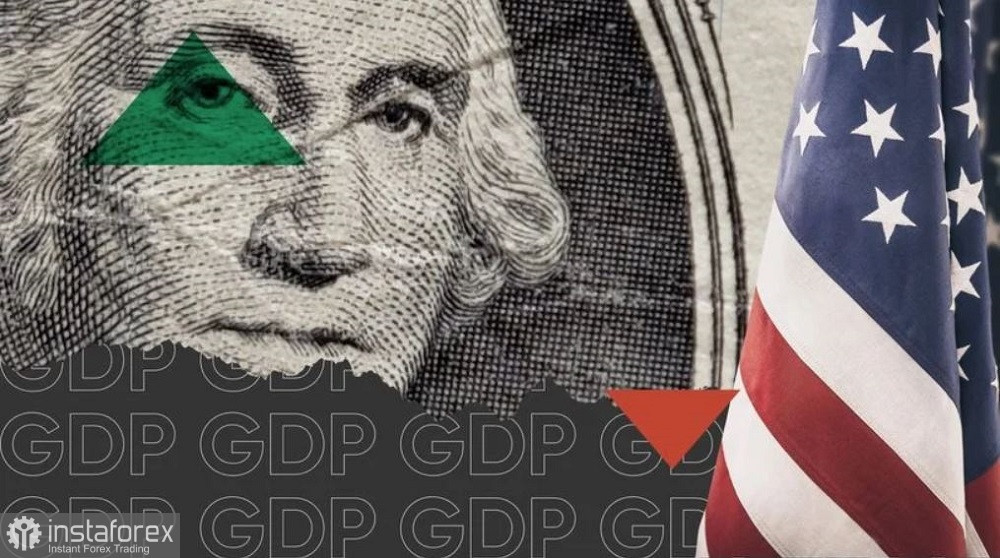The EUR/USD pair showed increased volatility but was generally trading sideways. Traders have struggled to determine the price's direction in the face of a mixed fundamental picture.
Thursday was filled with important events: the European Central Bank announced the results of its January meeting, and the United States released key data on the growth of the American economy for the fourth quarter of 2023. Despite the significance of these events, the EUR/USD pair continues to trade within the 8-figure range. Both buyers and sellers tried to gain the upper hand. Initially, the pair reached into the 9-figure range but failed to stay above the 1.0900 target. Afterward, the bears took the initiative and tried to settle below the support level at 1.0850 (the upper boundary of the Kumo cloud on the daily chart).

However, if we take away the intraday price fluctuations, we can come to the conclusion that market participants are full of doubts, both regarding the upside and the downside. While the scales are gradually tipping in favor of the greenback at the moment, it's still not advisable to rush into selling the euro. Earlier this week, the pair already fell to the lower boundary of the 8-figure range, where bears took profits, which put an end to the downward momentum. Given the fairly conflicting fundamental backdrop, this situation could repeat itself.
The U.S. economy grew at a 3.3% annualized rate during the final quarter of last year, the Commerce Department reported Thursday. This is lower than in the third quarter (4.9%) but higher than the forecasts. According to most experts, the U.S. GDP was expected to increase by 2.0% in October-December. In other words, the GDP growth rate has slowed compared to the third quarter, but the actual figure was in the "green." The breakdown indicates that consumer spending increased by 2.8% (which accounts for two-thirds of the economy), government spending increased by 3.3%, exports leaped 6.3%, and imports rose by 1.9%. Investment in residential construction advanced 1.1%.
However, the GDP deflator ended up in the "red." The GDP Price Index grew by 1.5% in the fourth quarter, down from 3.3% in the third quarter. The forecast was at 2.3%.
Following this report, the probability of a Fed interest rate cut in the March meeting decreased to 45% (with a corresponding increase in the probability of a status quo decision to 55%), according to the CME FedWatch Tool. As for the outlook for the January meeting, market participants are almost 100% certain that the central bank will keep all monetary policy parameters unchanged.
As we can see, the latest report has slightly tempered the market's "dovish expectations" regarding the Federal Reserve's future course of actions. Before the report was released, the probability of a rate cut in March was at 50%. The "red" color of the GDP Price Index has put a dent in the dollar's strength – dollar bulls did not fully benefit from the report.
Therefore, one should approach the current downward dynamics of EUR/USD with caution. If Friday's core PCE index falls into the "red," the balance of the scales may once again shift away from the greenback, as dovish expectations would strengthen.
It's also worth noting that the downward momentum was driven by the euro's weakness, which reacted emotionally to the outcome of the ECB's January meeting. In my opinion, the single currency fell victim to overly high market expectations. The ECB is still prepared to keep interest rates at their current levels, but it has also expressed readiness to be flexible in case inflation falls further.
According to ECB President Christine Lagarde, inflation could decline more quickly in the near term if energy prices evolve in line with the recent downward shift in market expectations. Although disruptions in Red Sea traffic as a result of ongoing geopolitical tensions in the Middle East are adversely affecting global trade flows. It's important to note that the increase in eurozone inflation was due to several factors, including tax hikes, reduction or removal of subsidies, and increased maritime transportation costs (complicating logistics and raising insurance costs). All of this suggests that inflation may accelerate in the coming months. In such conditions, the ECB will likely be forced to keep interest rates unchanged. In response to a question about rate cuts, Lagarde reiterated that future decisions on interest rates will remain data-dependent.
Thus, the situation for the EUR/USD pair remains uncertain. On the one hand, the headline GDP growth figure for the U.S. and Lagarde's cautious comments have strengthened the bears' positions. But, on the other hand, the devil is in the details: the U.S. report had a flaw, and the January ECB meeting was not entirely against the euro.
Therefore, it is advisable to consider short positions only when the bears have managed to settle below the support level of 1.0820 (the lower Bollinger Bands line on the daily chart), and in order to be more confident, within the 7-figure range. I'll reiterate – this week, bears attempted to break below 1.0800 but stopped at the base of the eighth figure.
Also, don't forget that the core PCE index will be published at the start of the U.S. session on Friday, which could completely reshape the fundamental picture for the greenback. Given all of the above, it would be wise to maintain a wait-and-see stance on the pair, despite the firm decline in EUR/USD during the second half of Thursday.





















